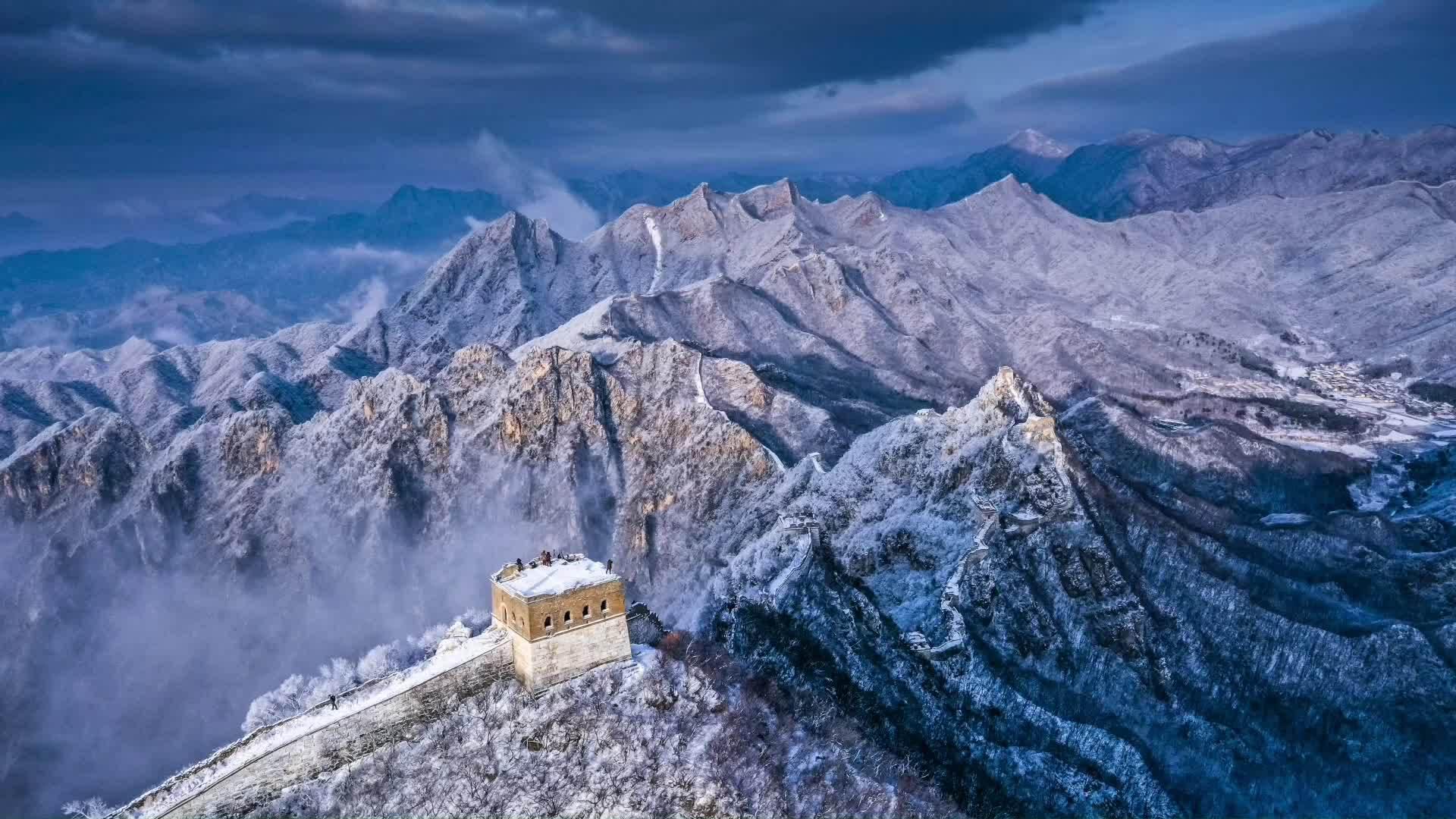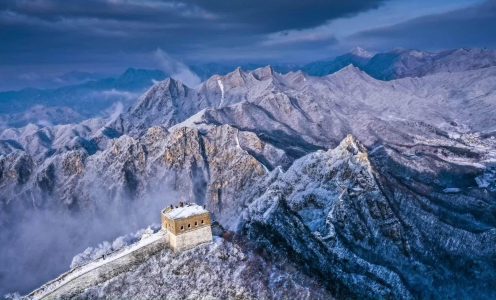Organizing Your Trip to the Great Wall of China
Did you ever fantasize about being able to walk on one of the Seven Wonders of the World? However, when you consider the fact that the wall extends across the landscape for miles upon miles, where do you even begin? This guide is your ultimate companion for planning your first trip to the Great Wall for first-time visitors. It will assist you in selecting the ideal section of the wall and will ensure that your experience is smooth and unforgettable.
Why Should You Go to the Great Wall?
Visitors who are visiting China for the first time will find that the Great Wall is more than just a wall; it is a journey through history. The construction of this incredible structure took place over the course of several centuries, and it served as a defense against invaders, a symbol of imperial power, and a demonstration of human ingenuity. Imagine the lives of the soldiers who patrolled its ramparts and the emperors who oversaw its construction as you walk along its ancient stones. This will transport you back in time and allow you to have a better understanding of their experiences.
Not only is the Great Wall rich in history, but it also features breathtaking views. Imagine yourself surrounded by breathtaking panoramas of undulating hills, rugged mountains, and verdant valleys. It is a dream come true for hikers and a paradise for all photographers. Whether you are someone who is interested in history, someone who is looking for an adventure, or simply someone who is looking for an experience that is one of a kind and awe-inspiring, the Great Wall of China has something to offer first-time visitors.
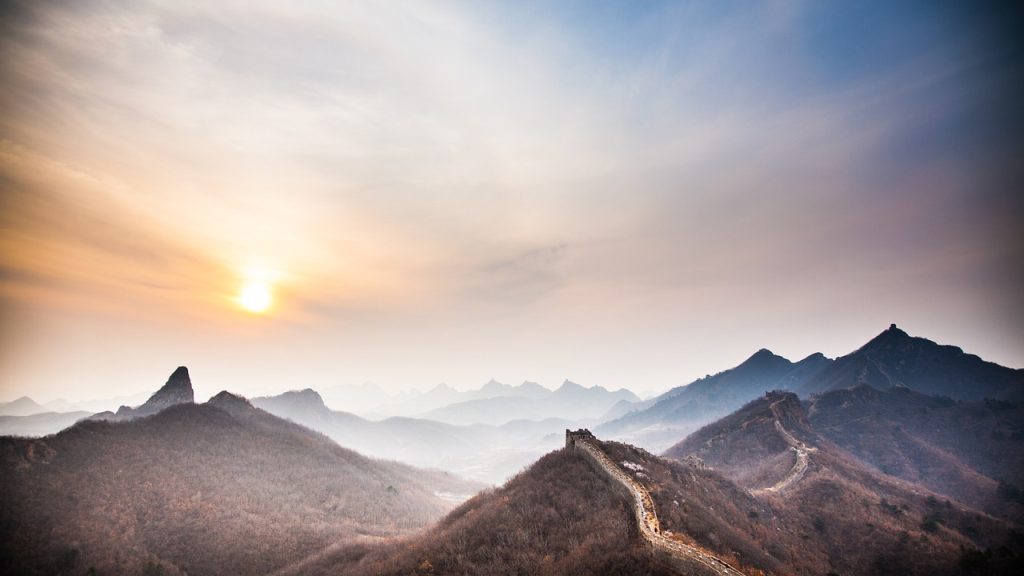
Selecting the Appropriate Section for Your Needs
There is not a single, continuous structure that makes up the Great Wall. It is made up of a considerable number of sections, each of which possesses its own personality and appeal. It is essential for first-time visitors to the Great Wall to have a thorough understanding of these distinctions. There are some sections that have been completely renovated and provide easily accessible amenities, while there are other sections that are “wild,” crumbling, and difficult to navigate.
For those who are just starting out, the following is a brief summary of the most popular sections:
- Badaling: This is the most well-known and extensively renovated section. There will be a lot of people there, but there will also be easy access, cable cars, and a lot of facilities.
- Mutianyu: In comparison to Badaling, Mutianyu is a section that has been meticulously restored and features breathtaking scenery. In addition, it provides enjoyable options such as a toboggan ride down.
- Jinshanling: Jinshanling is well-known for its stunning appearance, which has been partially restored, as well as its excellent opportunities for hiking. A fantastic option for those individuals who are looking for a more genuine experience.
- Simatai: Simatai is a one-of-a-kind destination due to its proximity to the enchanting Gubei Water Town and its night tours. For those looking for a more laid-back and varied experience, this is a good choice.
- Jiankou (Wild Wall): This “wild” section, which is known for its unrestored beauty and challenging hikes, will be mentioned briefly. In the absence of a guide, it is not recommended for first-time riders.
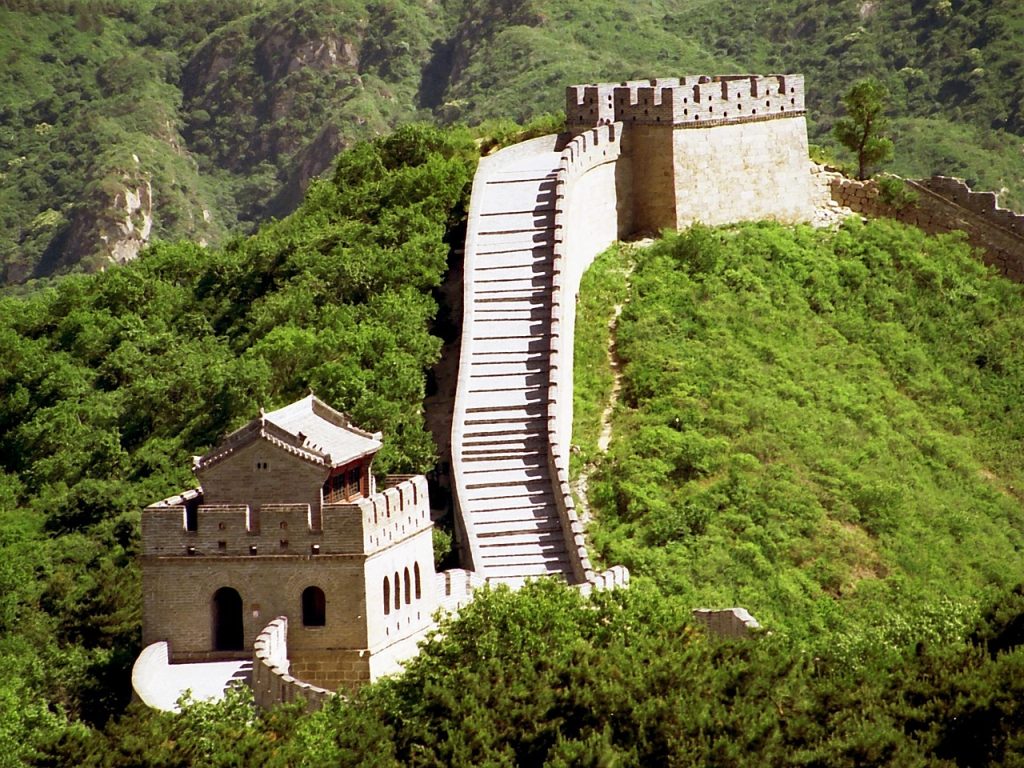
Arriving at the Great Wall of China
Beijing, which provides a variety of transportation options, is the most popular destination for tourists who wish to visit the Great Wall. The following is a breakdown that will assist you in selecting the option that is most suitable for you:
Transport Alternatives from Beijing
| Options for Transportation | Travel Time | Cost (approximate) | Comfort | Availability |
| Public Bus | 1.5 to 3 hours | ¥15 to ¥30 | Low to Medium | High |
| Tourist Bus | 1.5 to 2.5 hours | ¥80 to ¥150 | Medium to High | Medium to High |
| Train (to Badaling) | 1 to 1.5 hours | ¥7 to ¥15 | Medium | High |
| Private Car/Taxi | 1 to 2 hours | ¥400 to ¥800+ | High | High |
| Organized Tour | Varies | ¥300 to ¥1000+ | Medium to High | High |
A public bus is the most cost-effective mode of transportation. Within Beijing, there are multiple bus lines that travel to different parts of the Wall from different parts of the city. When departing from Deshengmen Bus Station, look for bus numbers 877 or 919 that are destined for Badaling. If you are traveling to Mutianyu from Dongzhimen, bus 916 Express is a good option; however, it is likely that you will need to transfer to a local shuttle bus or taxi for the final leg of the journey. Be ready for the possibility of encountering language barriers as well as longer travel times.
Compared to public buses, the tourist bus is a more convenient and comfortable mode of transportation. In most cases, these buses depart from central locations such as Tiananmen Square and provide direct service to well-known neighborhoods such as Badaling and Mutianyu. They typically cost a little bit more, but they spare you the trouble of having to deal with transfers.
Train: The S2 train line provides a route that is both quick and scenic, and it is only available to Badaling. Huangtudian Railway Station, which is easily accessible by subway, is the location from which it departs. One of the best ways to avoid traffic is to take this route; however, it is important to check the schedule in advance because trains can become crowded, particularly during the busiest times of the year.
The most expensive but also the most flexible option is to hire a private car or taxi. You are able to travel at your own pace and create a schedule that is tailored to your preferences when you hire a private car or taxi. With this, families or groups that want to avoid the crowds and have more control over their schedule will have the best possible experience. The price should be negotiated in advance.
An organized tour is a hassle-free way for first-time visitors to experience the Great Wall of China during their trip. Transportation, entrance fees, and frequently a guide are all included in the packages that are offered by a multitude of tour companies. If you would rather have everything arranged for you, this is a good option; however, you should compare prices and itineraries carefully before making a decision.
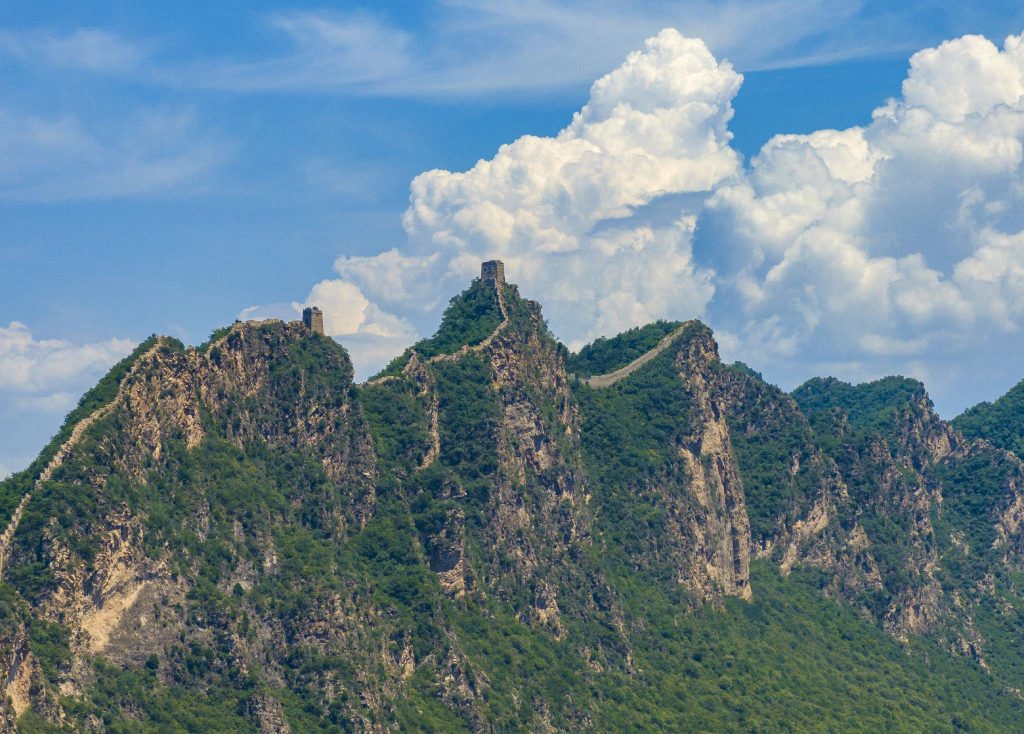
When is the Best Time of Year to Travel?
Spring (April-May) or autumn (September-October) is the best time for first-time visitors to explore the Great Wall of China with the greatest potential for success. There is a good chance that the weather will be pleasant, with clear skies and comfortable temperatures, making it conducive to strolling and taking in the sights.
There is a peak season during the summer months (June to August). You should anticipate higher temperatures, higher humidity, and an increase in the number of tourists, which could result in crowds, particularly in areas that are particularly popular, such as Badaling. Be prepared for the possibility of heat and lines, despite the fact that the verdant landscapes are breathtaking.
Winter, which spans from November to March, is the low season. This time period is characterized by lower temperatures and the possibility of snow and ice. Although the Wall is a sight to behold when it is covered in snow, it is essential to dress warmly and exercise caution when walking on paths that could potentially be slippery.
Things That You Should Be Aware Of Before You Leave
Entrance Fees: For first-time explorers, it is expected that they will pay between ¥40 and ¥65 for the privilege of entering the majority of the sections of the Great Wall. Additional fees may be required to ride the cable cars or visit other attractions in certain sections.
Opening Hours: The Great Wall is typically open from approximately 8:00 AM to 5:00 PM; however, this time frame can be slightly different depending on the section and the season. Before you leave, make sure you check the individual section’s hours.
Comfortable Shoes: The most important thing to wear is shoes that are comfortable. You are going to be walking a lot, and the majority of the time it will be on uneven surfaces. When traveling to higher elevations, it is important to dress in layers because the weather can change rapidly.
What to Bring: Water is essential, particularly during the months when the temperature is up. It is also a good idea to bring snacks, as the selection of food options may be limited in certain areas. A hat, sunglasses, and sunscreen are all necessary items to have in order to protect oneself from the sun.
Restroom Availability: While major sections such as Badaling and Mutianyu have restroom facilities that are of a relatively high quality, other sections may have fewer restrooms or facilities that are of a lower quality. When you come across public restrooms, it is a good idea to use them.
Basic Mandarin Phrases: Although it is not absolutely necessary, it can be beneficial to have a few basic Mandarin phrases such as “hello” (你好 – nƐ hƎo), “thank you” (谢谢 – xièxiè), and “where is the toilet?” (厕所在哪里?- cèsuƒ zài nƎlƐ?).
Accessibility: Unfortunately, when it comes to accessibility, the majority of the sections of the Great Wall are not easily accessible for people who have mobility issues. Steps that are steep and terrain that is uneven are common. Although Badaling does have some sections that are accessible, it is best to inquire about them in advance.
You are going to be treated to a breathtaking view, to summarize it briefly.
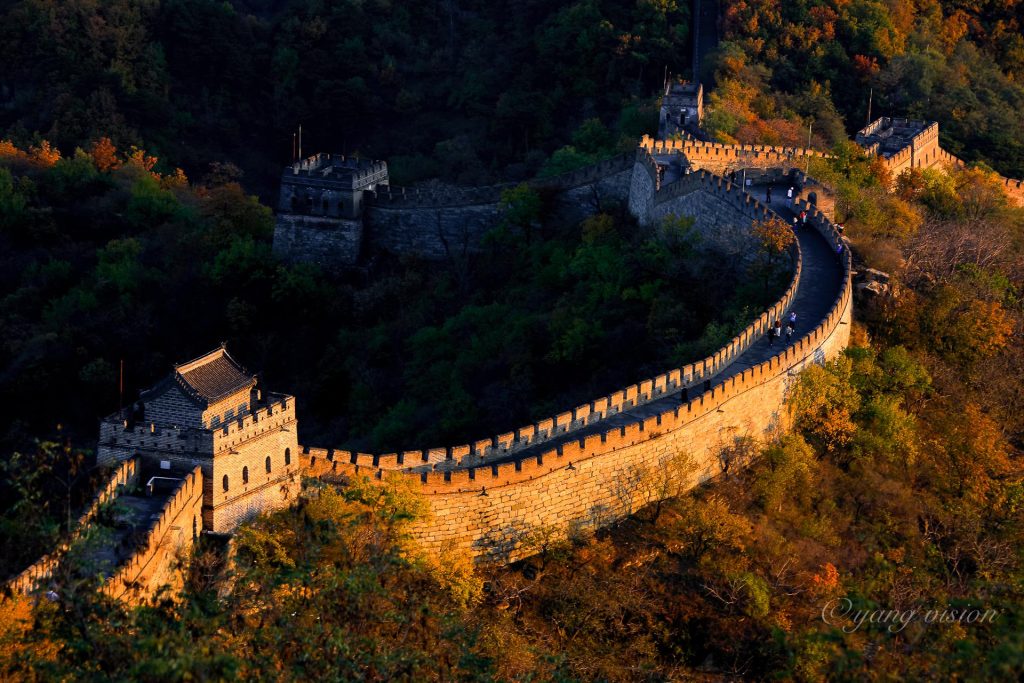
Taking a Look at the Most Outstanding Categories: Itineraries and Experiences
The purpose of this section is to provide you with information that will assist you in planning your day and making the most of your time by providing specific itineraries and experiences at the most popular sections of the Great Wall for first-time visitors.
Badaling: The Iconic Experience
Due to the fact that Badaling is the most well-known and well-restored section of the Great Wall, it is also the section that brings the greatest number of first-time visitors. Due to the fact that it is less difficult to access and provides the greatest number of amenities, it is a well-liked option among families and people who have limited mobility.
Pros: Cable car, easy access, and well-maintained facilities.
Con: Extremely crowded, with a less “authentic” atmosphere.
An Itinerary Suggestion (two to three hours):
- If you want to avoid the largest crowds, you should get there early (ideally before 9:00 AM).
- The cable car ride is an optional activity that is recommended for individuals who have limited mobility. It will save you both time and energy.
- While you are walking along the wall, you can explore the towers and take in the sights. It is generally true that the North section is less crowded than the South section.
- You can learn more about the history of the wall and how it was constructed by going to the Great Wall Museum, which is an optional activity.
- Either take the cable car or walk down (it is much more difficult than it appears!).
Where to Eat: There are not many options available, and the majority of them are fast food and restaurants that cater to tourists that are located near the entrance. Bring snacks with you if you prefer options that are either healthier or more authentic.
Breakdown of the Budget:
- Entrance fee: ¥40 (low season) to ¥45 (peak season).
- Cable car: ¥100 (one-way) to ¥140 (round-trip).
- Transportation from Beijing: ¥15 to ¥800 or more (depending on the mode).
- Food: ¥50 to ¥100 and beyond.
Mutianyu: Beauty and Adventure
With fewer people than Badaling, Mutianyu is a section that has been meticulously restored and is renowned for its breathtaking scenery. It provides a wonderful balance between accessibility and a more genuine experience of the Great Wall for those who are visiting for the first time.
Pros: Fewer crowds than Badaling, cable car and toboggan available, beautiful scenery.
Cons: Slightly greater distance from Beijing than Badaling.
Itinerary Suggestions (three to four hours):
- To get to Mutianyu, you can either take a vacation bus or rent a car.
- Pick your mode of transportation: a chairlift, a cable car, or hike up (the hike is challenging but ultimately rewarding).
- Spend some time strolling along the wall, discovering the numerous watchtowers, and taking in the breathtaking views.
- Take a ride down the toboggan for an experience that is both fun and one of a kind!
- Investigate the small village that is located at the foot of the wall.
Dining: When it comes to dining, there are a few local restaurants that offer straightforward Chinese cuisine, which are slightly more appealing than Badaling’s options. In addition to that, there are a few small shops that sell beverages and snacks.
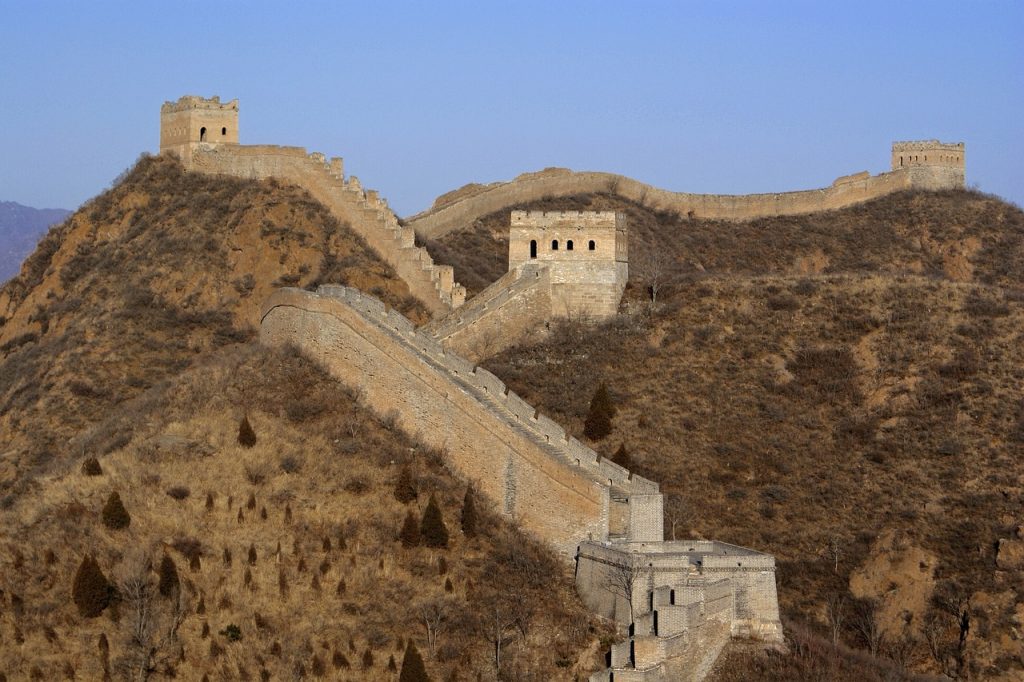
Breakdown of the Budget:
- Entrance fee: ¥45.
- Cable car: ¥100 (one-way) to ¥120 (round-trip).
- Toboggan: ¥100 (one-way).
- Transportation costs (from Beijing): ¥80 to ¥800 or more.
- Food: ¥50 to ¥150 or more.
Jinshanling: The Ideal Destination for Hikers
This section of Jinshanling has been partially restored, making it an ideal destination for people who enjoy hiking and taking in breathtaking scenery. For those who are just starting out, it provides a Great Wall that is not only more difficult but also extremely rewarding.
Pros: Less crowded than Badaling and Mutianyu, with breathtaking views, and excellent opportunities for hiking.
Negatives: The distance from Beijing is greater, and it requires more physical effort.
Itinerary Recommendation (four to five hours):
- You can get to Jinshanling by renting a car or taking a tourist bus, which is less frequent.
- Approximately ten kilometers of hiking is required to reach Simatai West from Jinshanling. A hike of this difficulty level takes between three and four hours to complete. You should be prepared for some steep climbs and terrain that is not level.
- Take in the breathtaking scenery along the way and appreciate the natural splendor of the areas that have not been restored.
- You have the option of exploring a shorter section of the wall that is located close to the main entrance if you are not up for the full hike.
Dining: We have a limited number of dining options. When you are planning to go on the entire hike, it is highly recommended that you bring your own water and snacks with you. Near the entrance, there are a few small vendors selling beverages and snacks that are considered to be basic.
Breakdown of the Budget:
- Entrance fee: ¥65.
- Transportation costs (from Beijing): ¥100 to ¥800 or more.
- Food: ¥30 to ¥50 (for snacks that are packed).
Simatai: With Its Charming Water Town and Nighttime Views
Simatai is one of a kind because it provides first-time visitors with the opportunity to experience the Great Wall at night, which offers a completely unique and enchanted viewpoint. Another advantage is that it is situated in close proximity to Gubei Water Town, which is a charming recreation of a traditional Chinese water town.
Pros: Night tours available, breathtaking scenery, located next to Gubei Water Town.
Cons: Possibility of crowding, particularly during the high season and on weekends. Booking in advance is required for the night tour.
A Suggested Route of Travel:
- Afternoon (three to four hours): Arrive at Simatai and ride the cable car up to the wall. Take pleasure in strolling and take in the landscape.
- Night (two to three hours): Participate in the organized night tour and take in the breathtakingly lit attractions.
- Optional: A travel to the Gubei water town.
Dining: In terms of dining options, Gubei Water Town is home to a large number of restaurants that serve a wide range of Chinese cuisines.
Breakdown of the Budget:
- Entrance fee: ¥40.
- Night Tour (includes cable car): ¥160.
- Refer to the previous section for Gubei Water Town costs.
A Table of Comparisons: Sections of the Great Wall
| Section | Price (approximate) | Best Visiting Hours | Experiences That You Absolutely Must Try |
| Badaling | ¥40 – ¥45 | Morning | Taking a cable car ride |
| Mutianyu | ¥45 – ¥60 | Morning or Afternoon | Toboggan ride and cable car ride |
| Jinshanling | ¥65 | Morning or Afternoon | A hike to Simatai West |
| Simatai | ¥40 | Afternoon/Evening | Night tour, Gubei Water Town visit |
Advice and Concluding Remarks Regarding the Great Wall of China Tour
This final section offers essential advice to ensure that your first-time visit to the Great Wall is safe, enjoyable, and respectful. It is followed by a powerful conclusion that summarizes the most important takeaways from the experience.
Advice on Precautions
- Footwear is Crucial: Put on shoes that are hardy, comfortable, and have a good grip. The terrain on the Great Wall is often uneven, with loose stones and steep steps. Hiking boots are best, but good walking shoes will suffice. Avoid sandals and high heels.
- Hydration: Bring plenty of water, especially during warmer months. Dehydration can occur quickly.
- Uneven Surfaces: Pay attention to where you are walking. Many surfaces are uneven with loose stones and steep steps. Watch your footing to avoid trips and falls.
- Awareness of Crowds: Be prepared for crowds when visiting popular sections like Badaling. Keep an eye on your belongings and be mindful of personal space.
- Observe Restoration: Do not climb on unrestored sections of the wall. These areas are fragile and dangerous. Stick to designated walkways and paths.
- Weather Watch: The Great Wall has unpredictable weather. Dress appropriately for sun, wind, rain, or even snow, depending on the time of year. Check the forecast and dress in layers.
Respect for Other Cultures
- No Littering: Dispose of trash properly in provided bins. Help preserve the beauty of the Great Wall for future generations.
- Respect the Landmark: The Great Wall is a historical site. Do not deface it in any way. Avoid graffiti, carving, or any other damage.
- Bargaining: It is acceptable and expected to bargain when purchasing souvenirs from small shops near the entrance. Be respectful and courteous during the process.
- Mandarin Phrases: Learning a few basic Mandarin phrases can enhance your experience and show respect for the local culture.
- Be Considerate: Be mindful of other visitors. Do not block pathways, make excessive noise, or interfere with others’ experiences.
Advice on Packing
With the following comprehensive packing list, you can rest assured that you will have everything you require for your first-time adventure to the Great Wall:
The Garments:
- Comfortable and breathable clothing (layering recommended)
- Sturdy walking or hiking shoes
- Hat (for sun or cold protection)
- Light jacket or sweater (even in warmer months)
- Rain gear (if the forecast calls for rain)
Most Important:
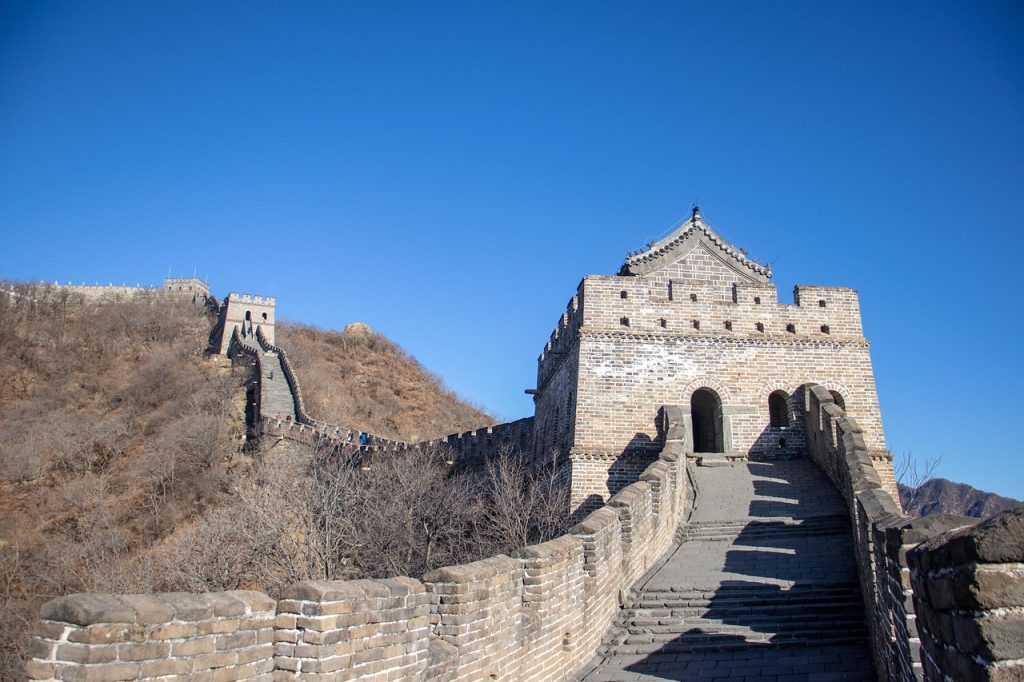
An Overview of the Itinerary Options
To have a successful experience at the Great Wall, it is essential to select the appropriate section and mode of transportation. To assist you in making a decision, here is a summary:
Itinerary and Transportation Summary
| Feature | Badaling | Mutianyu | Jinshanling | Simatai |
| Itinerary | Short visits, Half-day tours | Half-day/Full-day tours | Full-day hikes | Half-day/Night tours |
| Transportation | Bus, Train, Car | Bus, Car | Car, Tourist Bus | Car (often combined with Gubei Water Town) |
| Crowd Level | High | Medium | Low | Medium |
| Best For | First-time visitors, Families, Easy access | First-time visitors, Scenery, Fun activities | Hikers, Authentic experience, Photography | Night views, Photography, Relaxation & Scenery |
The Great Wall of China is more than just a collection of bricks and stones; it is a magnificent example of human perseverance, a representation of China’s long and illustrious history, and a universal marvel. Take on the challenge, take in the breathtaking scenery, and set out on your very own journey along the Great Wall itself! A journey like this will leave you in awe of the magnitude, the history, and the magnificent views that you will encounter.

